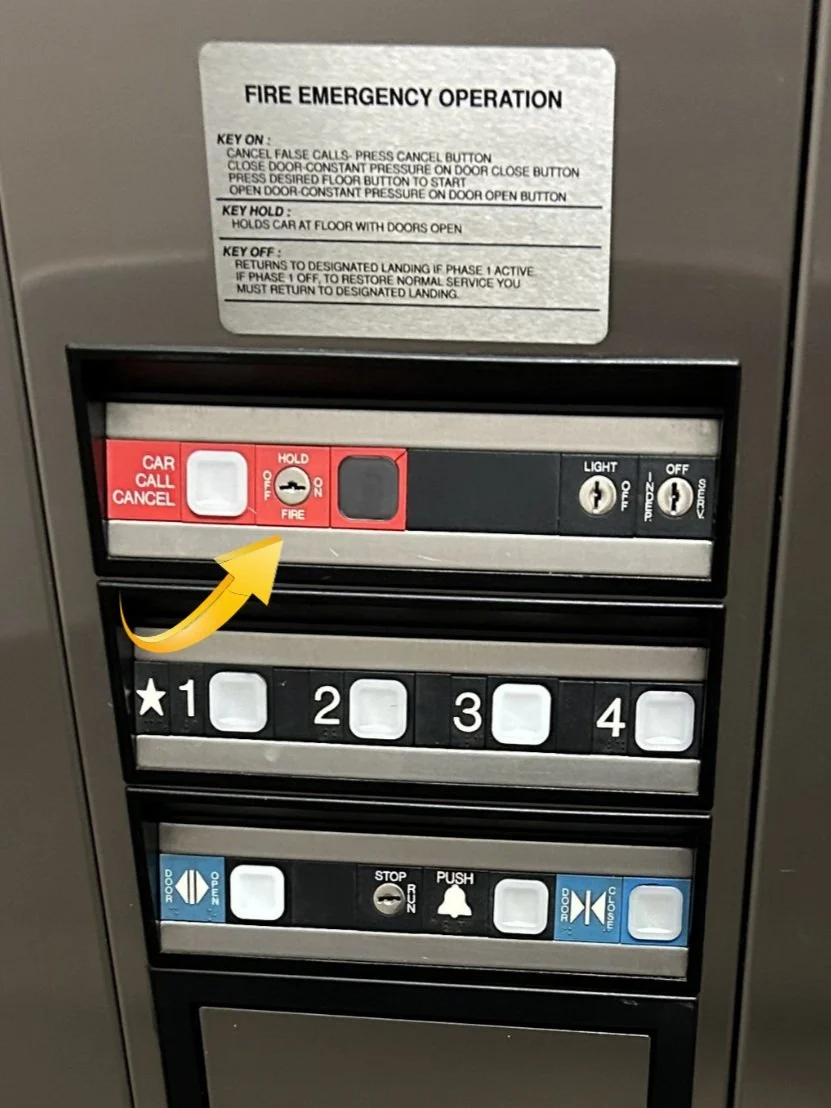What is Elevator Fire Service Testing & Who is Responsible for It!?
Phase I & II Fire Service Recall Testing aka Fire Testing
ASME A17.1, 8.6.11.1 states that fire service operation should be tested monthly. However, WAC 296-96-00675 amends (supersedes) the code to a frequency of quarterly. This means for the State of Washington, it is required quarterly for elevator compliance.
8.6.11.1 Firefighters' Emergency Operation is amended as follows: All elevators provided with firefighters' emergency operation shall be subjected quarterly, by authorized personnel, to Phase I recall by use of the keyed switch, and a minimum of one-floor operation on Phase II. Deficiencies shall be reported to the building owner and corrected by a licensed elevator mechanic. A record of findings shall be available to elevator personnel and the authority having jurisdiction.
Not all elevators have “Firefighter’s Emergency Operation”. It was added to the code in the early-1980s (1973 code, I believe). Elevators with Fire Service will have a key switch at the main lobby, or egress landing (indicated with a star). It is usually a red key switch, but older ones can be black.
Washington Elevator performs quarterly Fire Service testing for all our service customers. Not all service providers make the same commitment. Existing contracts are sometimes vague on this topic. If you are negotiating a new agreement, it is important to understand who is doing this. It does not need to be performed by an elevator mechanic. Code states that it should be performed by “authorized personnel”. This could be a building engineer, property manager, owner, subcontractor, or anyone else who is “authorized” (whatever that means). The test involves three steps:
1. “Phase I recall by use of the key switch.” Using the fire service key, turn the switch to “ON”. The elevator should begin buzzing and return to the main landing with the doors open (two examples below).
2. “A minimum of one-floor operation on Phase II.” Enter the elevator. Using the same key, turn the Phase II key switch to “ON”. Press a floor. The doors will remain open until you press and hold the “DOOR CLOSE” button. The elevator will travel to the desired floor and sit with the doors closed. Press and hold the “DOOR OPEN” button until the doors open. If the doors open, the test is complete. You’ve passed (one example below).
3. Once complete, return the elevator to normal operation by turning Phase II to “OFF”. Then turn Phase I key switch on the main landing to “OFF”. The look and operation can vary based on age of the elevator. All elevators should have instructions posted near the key switches.
Completed tests should be logged in the elevator Maintenance Control Program (MCP), located in the machine room. If there are deficiencies or the test fails, it will likely require a call to an elevator company. If you have any questions, contact your favorite elevator service company. If you do not have one, please reach out to Sean, our Chief Problem Solver, to help you out!



